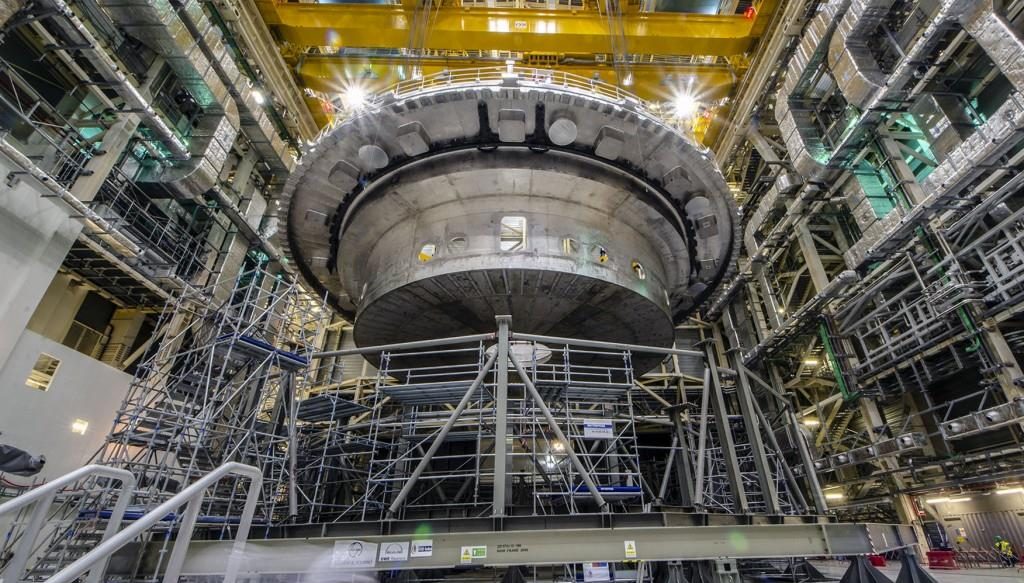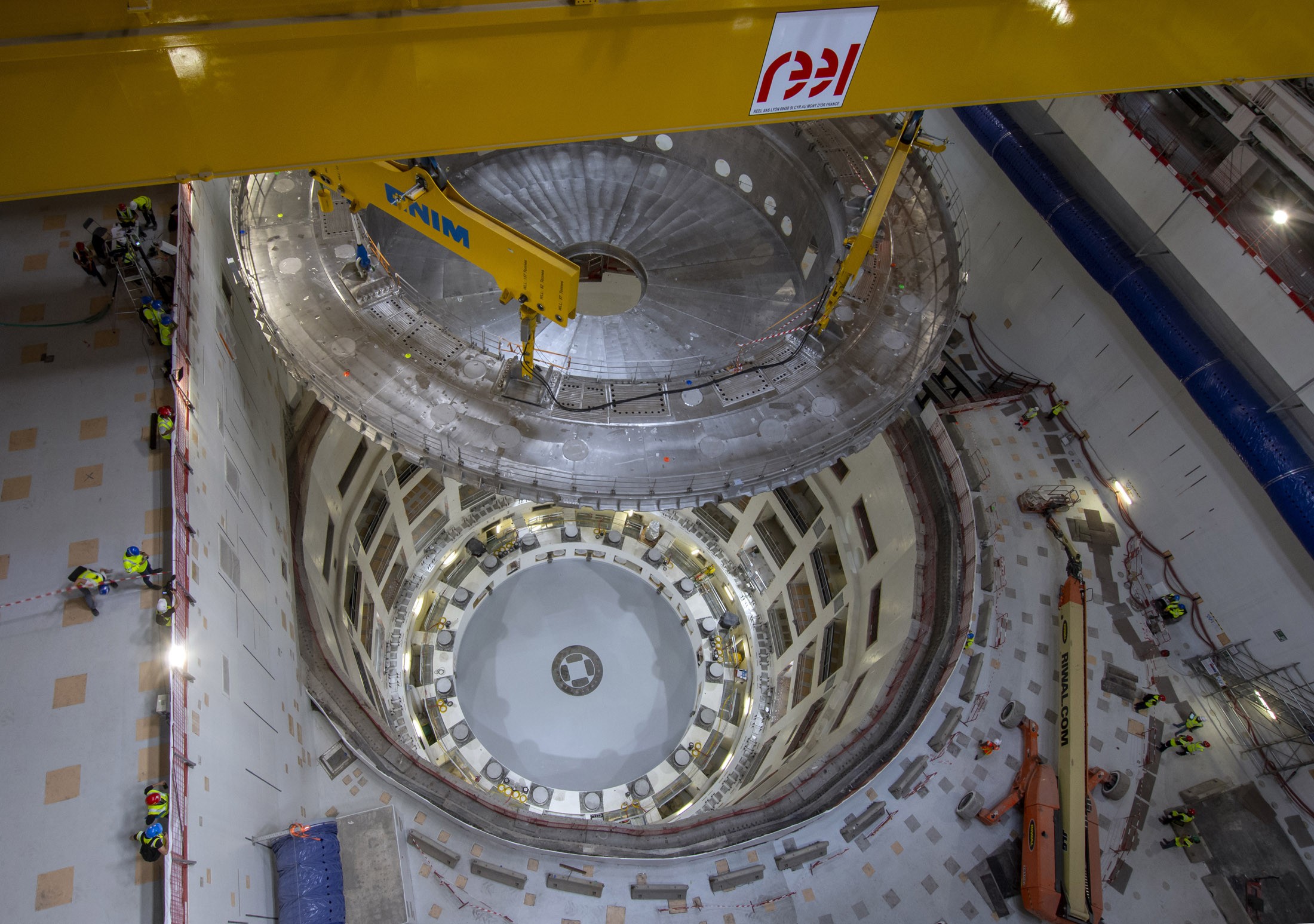
On May 26, the base of the ITER cryostat was successfully mounted onto its supporting structure in the Tokamak assembly pit. The 1250-tonne component was lifted from it’s mounting frame, carried across the Assembly hall and finally lowered into the pit, culminating a ten-year process to design, manufacture, deliver, assemble and weld one of the most crucial components of the ITER machine.
The International Thermonuclear Experimental Reactor (ITER) is the most ambitious energy project in the world, bringing together 35 different countries in the effort of producing clean energy for the generations to come. It is designed to demonstrate the feasibility of confinement nuclear fusion and develop the science and technology needed for a future nuclear power plant. After years and years of preparation, the international project officially started in 2007 and has since been building one of the most gargantuan research sites ever envisioned. According to the schedule, the first plasmas are expected in 2025.
The ITER cryostat will be a 30-metre-high, 30-metre-in-diameter, cylinder-like component charged with insulating the vacuum vessel and the magnetic system at cryogenic temperature from the outside environment. By maintaining a pressure of 10-4 Pa, the cryostat limits heat transfer by gas conduction and convection to a level tolerable to the cryogenically cooled components, allowing the superconducting magnets and the thermal shields to be cooled to 4.5k and 80k respectively. Once built, it will be the largest stainless steel high-vacuum pressure chamber ever built (16,000 m³), with a total weight of 3850 tonnes. Its base, with a weight of 1250 tonnes, is the single largest load of ITER Tokamak assembly.

The ITER cryostat is being procured by India, and manufactured by Larsen & Toubro Ltd at its Hazira factory. Once built, the pieces of the cryostat are sent to Cadarache and assembled on site under the supervision of the Indian Domestic Agency. The delivery of the base started back in December 2015, when the first six 50-tonne pieces arrived to the ITER site. The component was finalized in July of last year, and then assembled on May 26-27 2020 after several months of pre-assembly work. All in all, the assembly of the base of the cryostat culminates a ten-year process.
What is next? ITER is being built inside a concrete pit in a bottom-up way, and therefore the base of the cryostat has been one of the first parts of the puzzle to be placed. Next are the lower part of the cryostat wall and the thermal shields protecting it, as well as some of the bottom poloidal coils. After this, the assembly of the reactor vessel will finally be able to start.
Source: ITER News
